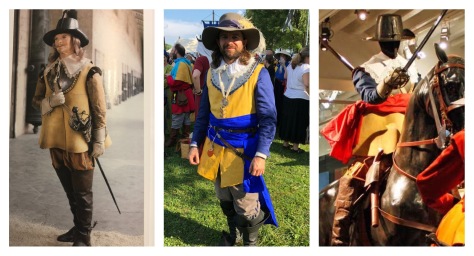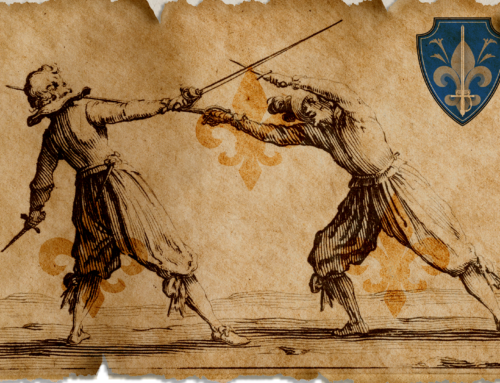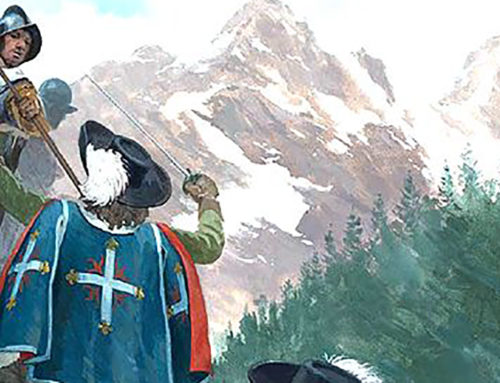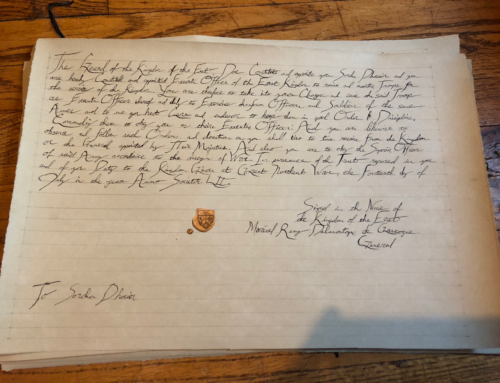Back from Pennsic and working on some new research projects that I’m hoping to release soon. Until then, I wanted to show off my Opening Ceremonies outfit from the event — a 17th Century French chevau légers.

Chevau légers were 17th Century light cavalry men in the French army. Me in the middle; chevau légers models from the Musee de l’Armee (Paris, France).
Chevau légers were considered light to medium cavalry. In the early to middle part of the 17th Century, they often wore a cuirass worn over a buff coat or just a buff coat, leather boots, and a helmet. The helmet was often a capeline, though the French cavalry apparently were big fans of the “iron hat” — a helmet that was in the shape of the wide-brim hat that was fashionable at the time (see the photos).
These guys often liked to hide their armor beneath a cassock, but it was extremely hot & humid that day and this outfit was warm enough as it was without throwing on an extra layer of wool on top.
For weapons, chevau légers were armed with a mousqueton (a short-barreled musket), a “strong sword” and two cavalry pistols.
This was my second (and final) year as general of the East Kingdom Rapier Army. I usually wear my cuirass but decided to go with just the gorget so I could show off the shiny new “cheater” buff coat I made (more on this in a future post). This way I still felt like a general but was a bit cooler and could show off the new outfit.
(I really want an “iron hat” or a capeline now, though.)
Sources:
“Exposition ‘Mousquetaires!’ au musée de l’Armée”, Ministère des Armées, 27/05/2014, https://www.defense.gouv.fr/actualites/memoire-et-culture/exposition-mousquetaires-!-au-musee-de-l-armee
French Armies of the Thirty Year’s War, Stephane Thion, LRT Editions





![So What Did The King’s Musketeers’ Uniforms Look Like? [1622-1660]](https://justinswordfit.com/wp-content/uploads/2018/08/russia-threemusketeers-500x383.png)
